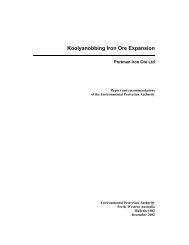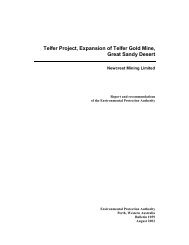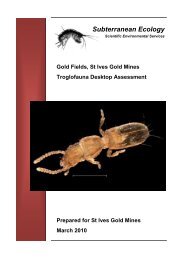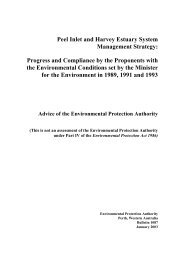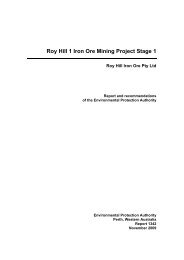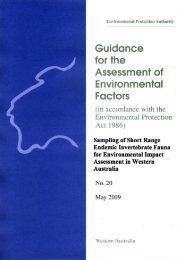Download 1 (.pdf 509KB) - Environmental Protection Authority
Download 1 (.pdf 509KB) - Environmental Protection Authority
Download 1 (.pdf 509KB) - Environmental Protection Authority
Create successful ePaper yourself
Turn your PDF publications into a flip-book with our unique Google optimized e-Paper software.
4<br />
basis in the dry months, usually from July to<br />
December as the sand is more easily<br />
screened when the moisture content is not<br />
excessive. Sand and shingle will be<br />
excavated from suitable deposits within the<br />
river bed with a front-end loader. Mining will<br />
take place selectively in pockets that have<br />
little or no vegetation. These pockets will be<br />
excavated down to the clay river bed,<br />
approximately 0.8 – 1.2 m deep with a loader.<br />
This material will be loaded directly onto an<br />
articulated dump truck, which then carts the<br />
sand to the stockpile area west of the<br />
western river bank.<br />
Here the sand is fed directly into a screening<br />
plant that separates the raw sand feed into<br />
three different product sizes; 65 mm large stones and<br />
sticks. The oversize product that consists of<br />
>65 mm stones, sticks and plant material, is<br />
returned to the mined areas of the riverbed<br />
where it will blend with fresh sand brought by<br />
intermittent flooding.<br />
During the period of the mining lease it is<br />
proposed that approximately 50,000 t of sand<br />
will be extracted from the lease per annum.<br />
As evident from excavation activities on other<br />
sand mining leases in nearby rivers in the<br />
Pilbara region, refilling of excavation areas<br />
with alluvial sands occurs as a result of<br />
deposition from river flows associated with<br />
rainfall from cyclones and tropical lows.<br />
The tenement M47/1438 is wholly within the<br />
Yule River Water Reserve, which is a Priority<br />
1 Public Drinking Water Source Area<br />
(PDWSA). All aspects of the mining operation<br />
will be managed in order to avoid<br />
contamination of any surface or groundwater.<br />
Support infrastructure on M47/1438 will<br />
consist of an on-site donga to serve as an<br />
office, a weigh bridge and recording shed, a<br />
water tank, a sewerage tank and an<br />
evaporative-transpirational leach field and<br />
three sea containers: a sea container with<br />
attached Westarp shade area; and two<br />
bunded sea containers – one for fuel and oil<br />
storage, the other to contain a generator and<br />
it‟s fuel supply.<br />
The YRSP is expected to create seasonal<br />
employment for 3 employees, providing<br />
opportunities for local indigenous<br />
employment.<br />
The Yamatji Marlpa Aboriginal Corporation, in<br />
conjunction with the Traditional Owners, the<br />
Kariyarra People, have undertaken a survey<br />
of the site and provided advice on areas that<br />
are able to be disturbed without impacting on<br />
Aboriginal heritage sites. No registered<br />
Aboriginal Heritage site is expected to be


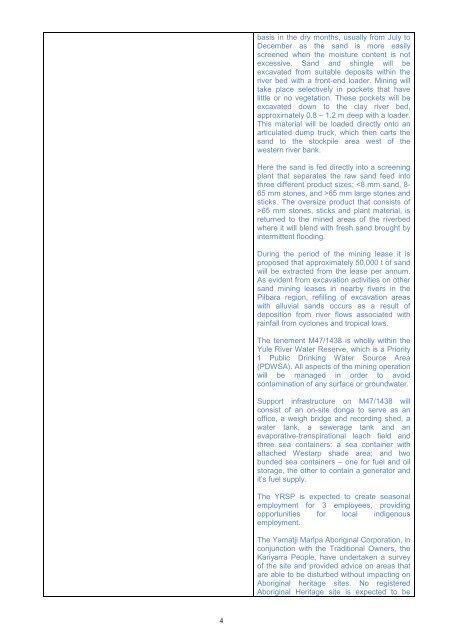
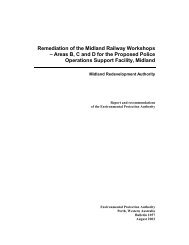
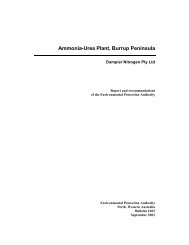
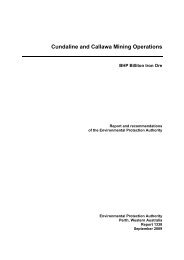
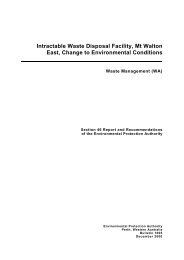
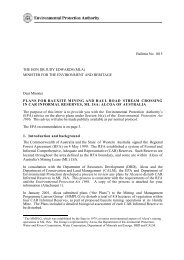
![[Project Title] - Environmental Protection Authority - The Western ...](https://img.yumpu.com/29001740/1/184x260/project-title-environmental-protection-authority-the-western-.jpg?quality=85)
